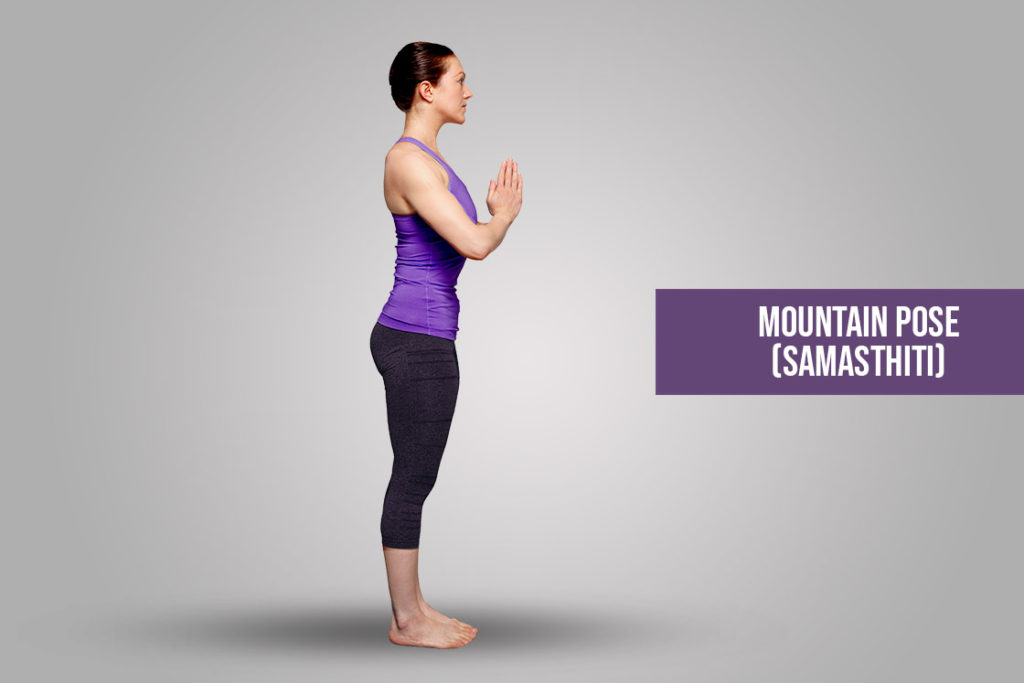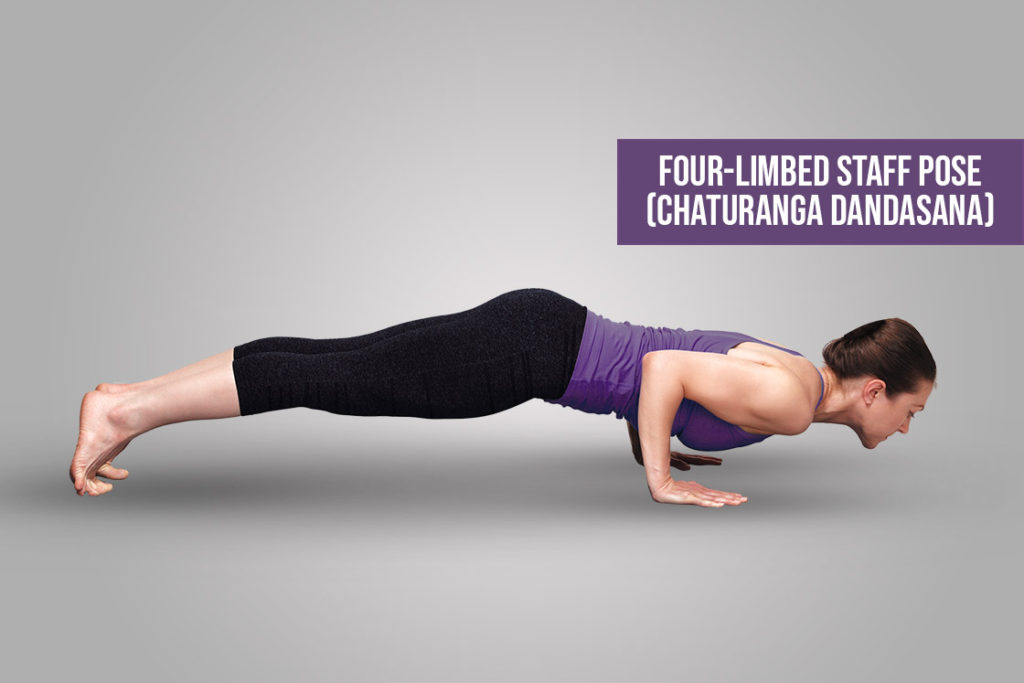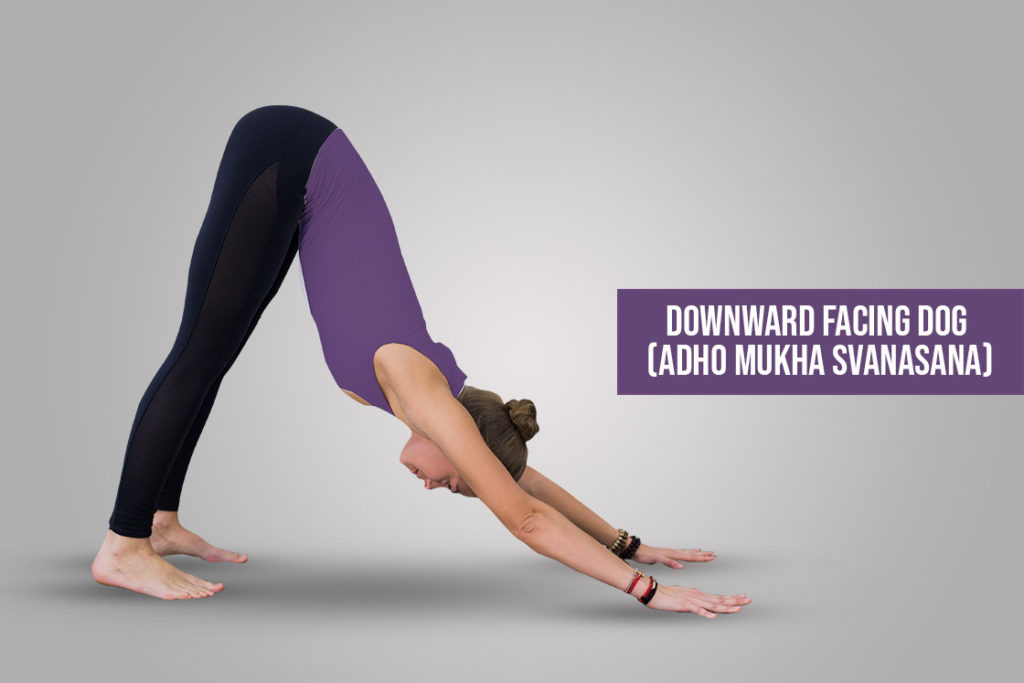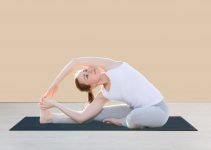
Sun Salutation A is the sequence of 10 simple yoga poses practiced with moderate intensity in Ashtanga and Vinyasa yoga sessions.
Ashtanga yoga is practiced with energetic vinyasa fused with high pace which makes it the most challenging style of yoga. However, if a beginner in Ashtanga yoga is interested to pursue Surya namaskar then he/she must tune-in to Ashtanga Surya Namaskar A.
A few rounds of this sequence is practiced as a warm-up routine and build heat in the entire body.
In contrast to traditional sun salutation, the sequence of poses in Ashtanga Surya Namaskar is a little different. Sun salutation A doesn’t include the lunge pose and eight-limbed pose -only takes 10 poses from the traditional sequence.
There is a successor sequence of sun salutation A in Ashtanga yoga called sun salutation B. 5 rounds of both sequences are practiced one after another before every Ashtanga yoga session. However, If you intend to use sun salutation as a standalone practice, you can do as many rounds as you’re comfortable. On doing a few rounds of it, you will see a calming sensation in your mind, enhanced energy level, and increase in stamina of the body. Therefore it’s a great workout to start your day.
Points You Should Know Before Sun Salutation A Practice
- Each pose of sun salutation A sequence should be incorporated with a specific Drishti (focused gaze). It helps in getting attentive to the pose and so one can easily flow in the sequence.
- As sun salutation itself is practiced in vinyasa flow, always inhale or exhale (according to pose) while moving from one pose to another i.e breath should be synchronized with movement. However, for a beginner, a pose can hold in normal breathing for 5-10 seconds.
- If you’re doing sun salutation A in quick flow vinyasa (advance practitioner), it will take less than a minute to complete one round of sequence. For beginners, it can go up to 2 minutes to complete one round.
- Ashtanga style flow is really hard at the beginning so the Sun Salutation A and B is. It’s good practice to start with a slow pace and build up incrementally. Also, routine your practice for a fixed time always.
Sun Salutation A Step-by-Step Instructions
Below is the sequence of poses and instructions to perform Sun Salutation A;
1. Samasthiti (Tadasana)

Breathing – Keep breathing normally| Drishti (Gaze) – The tip of the nose.
- Stand keeping the toes together and maintaining a small space between the heels.
- Stack the shoulders and hips over the feet.
- Lengthen your spine from your tailbone to the crown broadening the collar bones.
- The arms are released along the sides of the sides body with your palms facing forward.
- In tadasana, the body weight is evenly distributed around the four corners of the feet.
Beginner’s tips: Stand keeping the feet hip distance apart helps in gaining proper alignment for Samasthiti.
2. Raised Hands Pose (Urdhva Hastasana)

Breathing – Inhale | Drishti (Gaze) – The thumbs
- From the basic Samasthiti alignment, sweep your arms upward.
- Join the palms overhead simultaneously stretching the neck upward, to look towards the thumbs.
- Involve slight backbend to stretch upward in raised hands pose.
Beginner’s tips: Draw the navel towards the spine engaging the core muscles.
3. Standing Forward Bend (Uttanasana)

Breathing – Exhale | Drishti (Gaze) -Tip of the nose
- Fold forward from the hip joint sending the hips backward.
- Reach the floor with the hands placing the hands beside the feet slightly bending the elbows.
- In this position the abdomen rest over the thighs.
- The head reaches the ground while the forehead is kept touched to the shins.
4. Half Standing Forward Bend (Ardha Uttanasana)

Breathing – Inhale | Drishti (Gaze) – Third eye
- Straighten the arms placing the fingertips on the floor.
- Lift your torso, lengthening the spine and extending the head and chest.
- Keep the back flat and parallel to the floor.
Beginner’s tips: Try bending the knees and let the hands remain on the floor. This will maintain the integrity of the back. Also the hands can be placed on the shins to lift into half forward bend.
5. Four Limbed Staff Pose (Chaturanga Dandasana)

Breathing – Exhale| Drishti (Gaze) – Tip of the nose
- Send your feet backward one at a time.
- Bend the elbows pressing the palms against the floor.
- Lower the torso closer to the floor bringing the entire body parallel to the floor by pushing the toes to the ground.
- Stack the wrists under shoulders while getting into the four limbed staff pose.
Beginner’s tips: This pose can be modified bending the knees to the floor if it’s difficult to balance the body only on the toes and hands.
6. Upward Facing Dog (Urdhva Mukha Svanasana)

Breathing – Inhale | Drishti (Gaze) – Third eye
- Lower the torso to the floor and flatten the tops of your feet.
- Then, pressing the palms to the floor stretch forward extending the chest and spine upward.
- Uplift the thighs off the ground and throw the head backward assuming backbend stretching at the neck.
- Shoulders and the arms bear most of the weight.
Beginners tips: To arch the upper back in Urdhva Mukha Svanasana, keep the toes, feet, and buttocks activated while pushing the pelvis down. This can also be altered with the practice of cobra pose by the beginners.
7. Downward Facing Dog (Adho Mukha Svanasana)

Breathing – Exhale (stay for 5 breaths) | Drishti (Gaze) – Navel or knees
- Roll back on your toes brining the heels to the floor.
- Straighten the arms pressing the palms to the floor.
- The head hangs down between the arms.
- This brings the body into an inverted V shape.
Beginner’s tips: In down-dog pose uplift your pelvis while bending the knees to lengthen the spine and sides of the rib-cage.
8. Standing Forward Bend (Uttanasana)

Breathing – Exhale | Drishti (Gaze) – Tip of the nose
- Walk your legs forward between the hands.
- Fold forward at the hips resting the abdomen over the thighs.
- Bring the forehead to the shins and let the crown of the head hang towards the floor.
9. Raised Hands Pose (Urdhva Hastasana)

Breathing – Inhale| Drishti (Gaze) – The thumbs
- Lift the torso and raise the hands upwards.
- Join the palms in prayer pose overhead.
- Stretch the neck upward into a slight back bend engaging the spine and core muscles.
10. Samasthiti (Tadasana)

Breathing – Inhale & exhale | Drishti (Gaze) – The tip of the nose
- Firming the feet to the ground, lower the arms by the sides of your sides.
- Relax your neck and shoulders by rolling the shoulders away from the ears.
- Come back again in initial Samasthiti pose ending one round of Sun salutation A.
Contraindications
Sun Salutation A is contraindicated in the following conditions;
- A doctor’s consultation is required for people facing lower back issues like cervical spondylitis and hernia.
- If anyone has undergone recent surgery must avoid this practice.
- Women must skip practicing Surya Namaskar A during pregnancy and menstruation.
- People with spleen or liver disorder must abstain from this pose.
- Do not include it in your workout routine if you have any heart problems.
- Do not raise your arms overhead if you have high blood pressure.
Follow-up Poses
Following poses can be performed after the sun salutation A practice ends;
- Warrior Pose I (Virabhardasana I)
- Camel Pose (Ustrasana)
- Staff Pose (Dandasana)
- Seated Forward Fold Pose (Paschimottanasana)
- Corpse Pose (Savasana)
Therapeutic Applications
- Sun salutation A is beneficial in providing sound sleep, hence it cures insomnia.
- This practice is helpful in regulating hormonal flow and improves blood flow to reproductive organs. Hence beneficial in curing infertility.
- It calms the mind improving blood flow to the brain, thus, beneficial in the treatment of psychological disorder.
Sun Salutation A Benefits
1. Tones the entire body
Surya Namaskar A serves as a workout for the entire body. It burns the extra layer of fat and improves blood circulation throughout the muscles, ligaments, and joints. Hence, Sun Salutation A is an intense workout that tones the arms, thighs, hips, tummy, neck, and face.
2. Strengthen the upper torso
The neck, shoulders, chest, back, and abdomen are intensely stretched, expanded. It improves spinal flexibility and increases the strength of the entire upper torso.
3. Enhances the efficiency of the endocrine system
Surya namaskar A stimulates the endocrine system, as it enhances the functioning of various glands including the thyroid, parathyroid, pituitary, pineal, adrenal, testes, and ovaries. It also improves the metabolism and immunity of the body.
4. Improves the digestive system
There are certain poses that stretch the abdominal muscles and stimulates the internal organs. It improves the blood supply to the abdominal region thereby enhancing the functioning of the digestive system.
5. Promotes better respiration
Several poses in the Surya Namaskar-A sequence involves the expansion of the chest that increases the lung capacity. All the poses are performed with a rhythmic breathing pattern that cleanses the respiratory tract. This, in turn, facilitates improved breathing and maintains the respiratory organs.
6. Regulates the circulatory system
Through this Ashtanga Surya Namaskar series, the blood flows to both sides of the body. It serves as a gentle exercise for the heart and improves the functioning of the circulatory system.
Conclusion
Surya Namaskar A is an excellent practice of Ashtanga yoga involving various poses that any beginner can also perform. It is a great way to begin the yogic journey or to take it to an advanced level.
All the poses involved in the Surya Namaskar A are beginner to intermediate level along with various available modifications. It benefits digestive, circulatory, respiratory as well as nervous system.
Hence, keeping all the benefits in mind it is a must-do practice for any fitness enthusiast.




